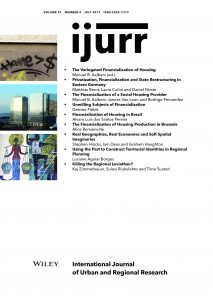This article focuses on the experiences of debordering and deinstitutionalization of regions. It approaches territories as processes and borders as multilayered social constructs. The article utilizes some key ideas on institutionalization and sees regions as ‘Leviathans’ that are entities ‘thick with things’, both human and nonhuman. Through 10 focus group discussions, the article discusses the sense of belonging and how a region ‘holds onto’ both human and nonhuman actants even after it loses its status in the legitimate regional structure. Due to this stickiness, it concludes that deinstitutionalization is never complete in a sense that all regional consciousness would disappear entirely. After their administrative status is removed, regions remain in a state of in betweenness: not quite fully existing, not quite fully extinct. This makes the concept of deinstitutionalization highly contested and one that eludes easy definitions. However, it is useful to understand deinstitutionalization as a process that turns regions into palimpsests or sets of assemblages that vary in time. Relatedly, regions that are officially deinstitutionalized can endure in ‘penumbral’ form, and can remain meaningful for their inhabitants for a long time.
Details
Written by:
Kaj Zimmerbauer, Sulevi Riukulehto & Timo Suutari
Digital Object Identifier (DOI)
10.1111/1468-2427.12547
About DOI

